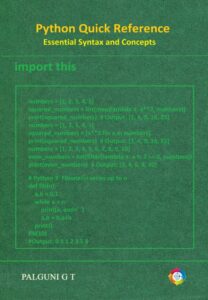Introduction
Most conversations in the world of Artificial Intelligence today revolve around Generative AI — systems that create content such as text, images, and code. However, a profound shift is already underway toward something far more dynamic and autonomous — Agentic AI.
If Generative AI creates, Agentic AI acts.
This new paradigm moves beyond content generation to goal-driven reasoning, planning, decision-making, and self-improvement. It marks a transformation where AI systems don’t merely respond to prompts but think, plan, adapt, and act independently within a defined context.
🌐 1. The Foundation: AI and Machine Learning
The journey toward Agentic AI begins with the foundational layer of AI and Machine Learning (ML).
Here, models learn from data through algorithms that recognize patterns and make predictions.
Key Components:
- Supervised Learning: Models learn from labeled datasets (e.g., classifying spam emails).
- Unsupervised Learning: Systems discover patterns in unlabeled data (e.g., customer segmentation).
- Reinforcement Learning: Agents learn through trial and error (e.g., self-learning robots or AlphaGo).
- Natural Language Processing: Understanding and generating human language.
- Reasoning and Optimization: Finding optimal solutions to complex problems.
Example:
A recommender system like Netflix uses machine learning to learn user preferences and recommend content — a precursor to intelligent behavior but still passive and reactive.
🧠 2. Deep Neural Networks — The Engine of Modern AI
The next layer, Deep Neural Networks (DNNs), revolutionized AI by mimicking how the human brain processes information.
These architectures power everything from image recognition to language understanding.
Core Types:
- CNNs (Convolutional Neural Networks): Used for image classification and visual perception tasks.
- RNNs and LSTMs: Ideal for sequential data like speech or time series.
- Transformers and LLMs (Large Language Models): Enable contextual understanding in text and multimodal inputs.
Example:
When you ask ChatGPT a question, a transformer-based LLM processes your words, reasons over large knowledge representations, and generates a coherent answer.
🎨 3. Generative AI — When Machines Start Creating
Generative AI marked the first major leap from understanding to creation.
These systems generate new text, images, videos, music, or even code from learned data patterns.
Examples:
- GPT Models (OpenAI): Generate text, summaries, and code.
- DALL·E / Midjourney: Generate creative visual art from text prompts.
- Diffusion Models: Create photorealistic images and animations.
Applications:
- Content creation in media and marketing.
- Automated code generation and documentation.
- Design assistance and prototype visualization.
However, Generative AI lacks intent or autonomy — it creates but doesn’t decide why or how to act.
🧩 4. AI Agents — The Step Toward Autonomy
AI Agents bridge this gap by adding agency — the ability to act with purpose and context.
These systems integrate planning, reasoning, memory, and tool use.
Key Features:
- Planning & Task Prioritization: Agents break goals into actionable steps (ReAct, Chain-of-Thought frameworks).
- Memory Systems: Short-term and long-term memory for contextual understanding.
- Tool Use & Orchestration: Agents can call APIs, execute code, and connect to databases.
- Human-in-the-Loop Oversight: Balances autonomy with safety and accountability.
Example:
An AI research assistant that not only answers queries but also:
- Searches recent papers,
- Summarizes findings,
- Generates a literature review, and
- Updates its plan based on user feedback.
This level of task orchestration marks the transition from static interaction to dynamic problem-solving.
🚀 5. Agentic AI — From Thinking to Doing
Agentic AI represents the next evolutionary phase — systems with long-term goals, self-reflection, and adaptive autonomy.
These are self-improving, goal-oriented agents capable of planning, executing, and evaluating their actions within safe boundaries.
Core Capabilities:
- Long-term Autonomy & Goal Chaining: Continuously pursue multi-step objectives.
- Self-healing & Self-reflection: Detect and correct errors or inefficiencies.
- Governance & Ethical Guardrails: Operate under defined safety, fairness, and accountability frameworks.
- Memory Retention & Feedback Loops: Learn from past outcomes for continuous improvement.
Example:
Imagine a personalized AI health coach:
- Monitors daily habits and health data,
- Plans fitness routines and meal recommendations,
- Adapts based on progress and feedback, and
- Ensures alignment with safety and ethical guidelines.
This is Generative AI with a mission — proactive, intelligent, and responsible.
🔍 Real-World Applications of Agentic AI
| Domain | Application | Description |
|---|---|---|
| Business Automation | Intelligent Workflow Agents | Automate business processes like report generation, customer follow-ups, and decision-making. |
| Education | AI Tutors & Mentors | Adaptive agents personalize learning paths and provide real-time feedback. |
| Healthcare | Medical Assistance Agents | Continuously analyze health data and coordinate care across systems. |
| Cybersecurity | Autonomous Defense Agents | Detect, analyze, and counter security threats dynamically. |
| Software Development | Code Execution Agents | Debug, test, and deploy code automatically using multi-step reasoning. |
| Sustainability | Smart Grid Agents | Manage energy distribution efficiently using predictive control and adaptive learning. |
⚖️ Ethical and Safety Dimensions
As Agentic AI grows in autonomy, ethical and governance frameworks become crucial.
These systems must:
- Operate transparently and explain decisions.
- Maintain human oversight and control.
- Respect privacy, fairness, and accountability principles.
This leads to Human-Centered AI — where agents assist, not replace, human judgment.
🔮 The Road Ahead: From Creation to Collaboration
The shift from Generative AI to Agentic AI is not merely technological — it’s philosophical.
It redefines intelligence as purposeful action rather than passive generation.
The key question is evolving:
“What can AI create?” ➜ “What can AI do — safely and intelligently — on its own?”
As humans and AI agents begin to collaborate seamlessly, we are entering an era where machine autonomy and human intent align to solve complex, real-world problems.
🧭 Conclusion
Agentic AI is the natural progression of artificial intelligence — from pattern recognition to autonomous action.
By embedding reasoning, memory, planning, and ethical governance, it transforms AI from a reactive tool into an intelligent collaborator.
In essence:
Generative AI creates. Agentic AI acts — responsibly, intelligently, and purposefully.
Would you trust an AI agent to make autonomous decisions on your behalf?
The answer to this question will shape the next chapter of human–AI evolution.
🧭 Table: Hierarchical Structure of Agentic AI Ecosystem
| Level | Category / Layer | Subcomponents / Concepts |
|---|---|---|
| 1 | Agentic AI | – Long-term Autonomy & Goal Chaining- Governance, Safety & Guardrails- Memory Governance & Retention Policies- Feedback Loops & Evaluators- Observability & Tracing |
| 2 | AI Agents | – Planning (ReAct, CoT, ToT)- Memory Systems (short-term & long-term)- Task Scheduling & Prioritisation- Tool Orchestration (actions/plugins)- Content Management (state & history)- Risk Management & Constraints- Multi-agent Collaboration- Human-in-the-Loop Oversight- Agent Marketplaces & Contracts- Dynamic Tooling- Self-healing Agents- Self-improving Agents- Agent Protocols |
| 3 | Generative AI | – Text Generation (chatbots, copilots)- Speech Interfaces (TTS & ASR)- Audio/Music Generation- Video Generation- Image Generation- Code Generation- Retrieval-Augmented Generation (RAG)- Multimodal Generation (text & image)- Summarisation- Personalisation- Autonomy & Reflection- Self-reflection & Error Recovery |
| 4 | Deep Neural Networks | – Convolutional Neural Networks (CNNs)- Recurrent Networks & LSTMs- Large Language Models (LLMs)- Pretraining & Fine-tuning- Transfer Learning |
| 5 | AI & Machine Learning | – Transformers- Natural Language Processing- Attention Mechanisms- Reasoning & Problem Solving- Perception & Action- Supervised Learning- Unsupervised Learning- Reinforcement Learning |
Reference: Linkedin Posts



